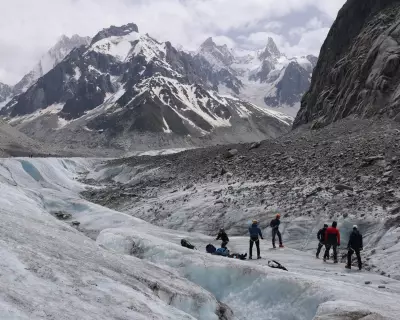
In a discovery that's sending shockwaves through the scientific community, researchers have uncovered evidence of a massive, unexplained structure lurking deep within our planet. Earth scientists from Colorado State University have detected what appears to be an enormous anomalous mass situated approximately 2,900 kilometres beneath the planet's surface.
The Hidden World Beneath Our Feet
Using advanced seismic analysis techniques, the research team identified this mysterious formation while studying the boundary between Earth's core and mantle. The massive structure, detected through sophisticated monitoring of seismic waves from earthquakes, represents one of the most significant geological discoveries in recent memory.
Dr Samantha Weaver, lead researcher on the project, explained the significance: "What we're seeing challenges conventional understanding of Earth's internal structure. This isn't just a minor variation - we're talking about something substantial enough to potentially rewrite textbooks."
Global Implications and Future Research
The anomalous mass appears to be concentrated beneath West Africa and the South Atlantic Ocean, with similar but smaller structures identified beneath the South Pacific. Scientists believe these formations may hold crucial clues about Earth's formation and evolution over billions of years.
Key findings from the research include:
- Detection of massive structures at the core-mantle boundary
- Potential connections to ancient planetary formation processes
- Possible explanations involving accumulated oceanic crust over geological timescales
- Implications for understanding volcanic activity and tectonic movements
What This Means for Understanding Our Planet
While the exact nature of these structures remains uncertain, researchers speculate they could represent accumulations of subducted oceanic crust that has settled at the core-mantle boundary over millions of years. Alternatively, they might be evidence of chemical interactions between the core and mantle that science has yet to fully comprehend.
The discovery opens up new avenues for understanding planetary formation not just on Earth, but across our solar system. As monitoring technology improves and more data becomes available, scientists anticipate further revelations about the dynamic world beneath our feet.
This research underscores how much we still have to learn about our own planet, reminding us that some of Earth's greatest mysteries lie not in distant galaxies, but right beneath our feet.





